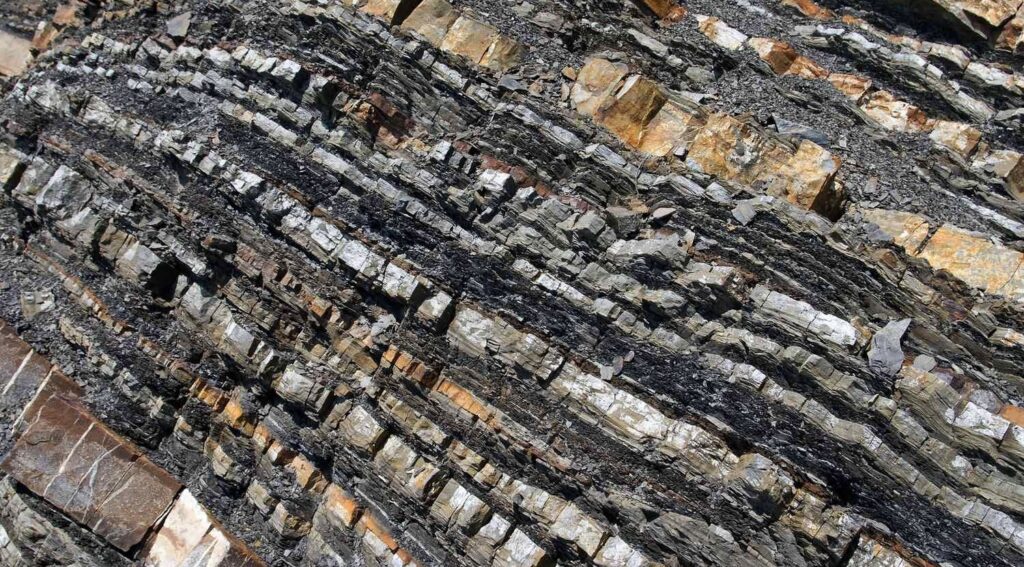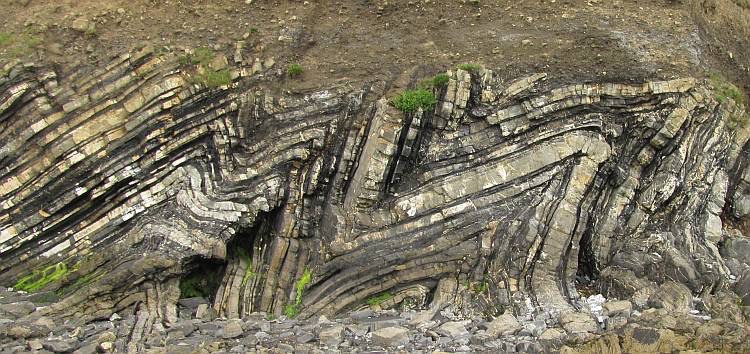
Shale: Unveiling Its Essence and Significance
Shale, once relegated to being merely the dark grey substance nestled between sands, has undergone a transformative journey in recent years. Formerly overlooked, it now stands as a pivotal reservoir in the realm of oil and gas exploration. The characterization of shale has emerged as a crucial pursuit, prompting us to delve deeper into its essence. What truly defines shale? Is it sufficient to identify it based on appearance alone? These questions beckon a more nuanced understanding, one that influences how we perceive, explore, develop, and regulate this enigmatic geological entity.
Alberta Government: Defining Shale’s Composition and Characteristics
The Alberta government, through Section 1.020(2)(27.1) of the Oil and Gas Conservation Regulations, offers a precise definition of shale. According to this regulation, shale is delineated as a lithostratigraphic unit containing less than 50% organic matter by weight. Additionally, it specifies that less than 10% of the sedimentary clasts within shale possess a grain size exceeding 62.5 micrometres, while more than 10% have a grain size below 4 micrometres.
Interpretive Flexibility in Definition
While the regulatory definition appears stringent, it allows for interpretive flexibility. The mention of ‘ten percent of the sedimentary clasts’ raises questions regarding the volumetric significance of these components within the rock matrix. It is plausible that a minute proportion of the rock volume comprises these clasts, potentially falling well below the stipulated 10%. Clarity in terminology is paramount, as it shapes our approach to studying, exploiting, and managing shale reservoirs.
Comparison of Shale Characteristics
| Criteria | Regulatory Definition | Interpretive Perspective |
|---|---|---|
| Organic Matter Content | Less than 50% by weight | Influence on hydrocarbon potential |
| Sedimentary Clast Size | 62.5 micrometres, >10% <4 micrometres | Implications for reservoir quality and behavior |
Wikipedia: Exploring Shale’s Geological Significance
Geological Origins and Formation
Wikipedia serves as a comprehensive resource elucidating the geological origins and formation processes of shale. It highlights how shale, a fine-grained sedimentary rock, evolves from the compaction of clay, silt, or mud over extensive periods. This intricate formation contributes to the unique properties and characteristics exhibited by shale reservoirs.
Shale Reservoir Potential
Delving into shale’s reservoir potential, Wikipedia underscores its growing importance in the energy sector. Shale reservoirs, once overlooked, now play a pivotal role in global energy production. The extraction of hydrocarbons from shale formations has revolutionized the industry, reshaping energy landscapes worldwide.
Key Points on Shale Reservoirs
- Shale reservoirs derive from the compression of fine particles over time;
- The development of hydraulic fracturing techniques has unlocked vast reserves within shale formations;
- Shale reservoirs are integral to meeting escalating energy demands and diversifying energy sources.

Dictionaries: Unraveling Linguistic Nuances of Shale
Lexical Definitions and Connotations
Dictionaries provide invaluable insights into the linguistic nuances surrounding the term “shale.” They offer definitions that encapsulate both the geological composition and broader connotations associated with shale. By examining various dictionary entries, we gain a multifaceted understanding of how shale is perceived across different contexts.
Evolution of Terminology
The evolution of shale-related terminology reflects shifting paradigms in geoscience and industry practices. Dictionaries chronicle the progression of terms used to describe shale, mirroring advancements in scientific knowledge and technological innovations. This linguistic evolution underscores the dynamic nature of geological discourse.
Evolution of Shale Terminology
| Era | Term | Definition |
|---|---|---|
| Early 20th Century | Bituminous Shale | Rich in organic matter, used for fuel |
| Modern Era | Shale Gas | Natural gas extracted from shale formations |
| Future Prospects | Enhanced Oil Recovery Shale | Techniques for maximizing oil extraction |
Potter et al (2005) and Others: Scientific Insights into Shale Properties
Research Findings on Shale Composition
Potter et al. (2005) and other researchers delve into the intricate properties of shale, shedding light on its composition and structural characteristics. Their studies unveil the complex interplay of organic and inorganic components within shale formations, offering valuable insights into reservoir behavior and potential extraction methods.
Shale Mechanics and Fracturing Behavior
Exploring shale mechanics and fracturing behavior, scientific studies by Potter et al. and peers delve into the mechanical properties of shale rocks. By analyzing fracture patterns, porosity, and permeability, researchers unravel the factors influencing shale reservoir productivity and the efficacy of hydraulic fracturing techniques.
Key Research Findings on Shale Properties
- Shale composition comprises a delicate balance of organic and inorganic constituents;
- Understanding fracture propagation in shale formations is essential for optimizing extraction processes;
- Research emphasizes the need for tailored approaches to exploit the full potential of shale reservoirs.
Conclusion
In conclusion, the multifaceted nature of shale transcends mere geological classification, extending into regulatory, linguistic, and scientific realms. By delving into diverse perspectives offered by governmental regulations, online resources, linguistic analyses, and scientific research, we unravel the complexities of shale and its significance in contemporary energy landscapes. As shale continues to redefine conventional notions of reservoir characterization and energy extraction, a holistic understanding of its meaning and properties becomes imperative for stakeholders across industries.

















